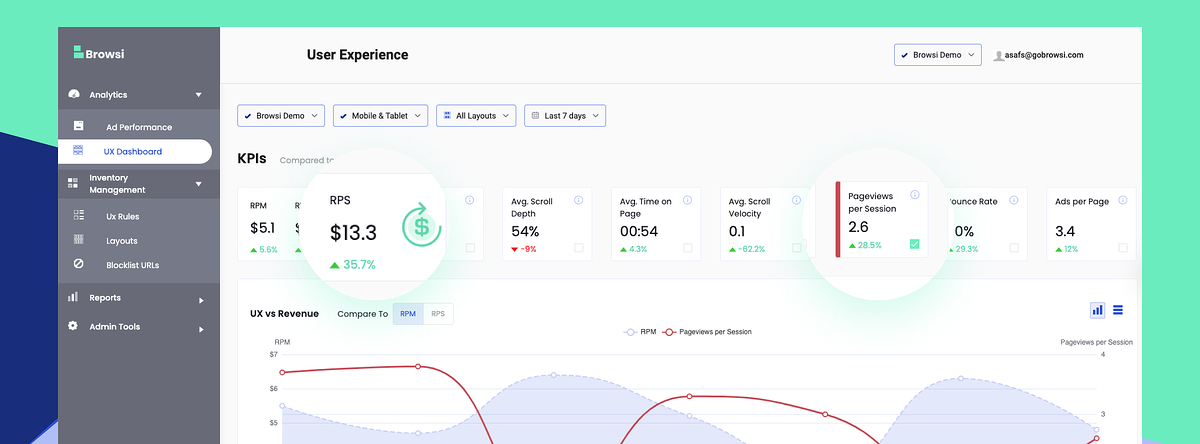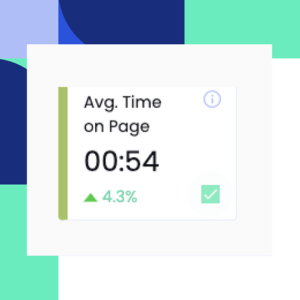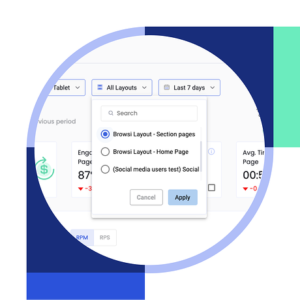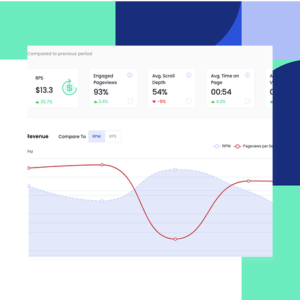Brand New UX Dashboard
By Browsi | April 18, 2022

For the first time ever, uncover how your monetization strategy directly impacts your UX and find the perfect UX/Revenue balance.
You can now see in one slick dashboard how your UX KPIs and your Revenue KPIs correlate. No more shooting in the dark and upsetting your Editorial team, ensure that every ad-related decision also improves your UX.
 Track your UX and Revenue KPIs
Track your UX and Revenue KPIs
Monitor all your UX metrics such as pageviews per session, average scroll depth, average time on page and see their correlation with your RPM and RPS.
 Analyze your UX per individual layout
Analyze your UX per individual layout
Understand how each of your different ad layouts affect the users’ behaviors AND your revenue to adapt your monetization strategy accordingly.
 Find your UX/Revenue sweet spot
Find your UX/Revenue sweet spot
Pinpoint the perfect UX/Revenue balance and never settle again for less revenue to protect your UX or for bad UX to grow your revenue!
Tired of having no visibility into how your ad layout impacts your UX?
Schedule your demo now and we’ll be more than happy to show you our new UX dashboard and how you can get the best of both worlds, increased revenue AND improved UX.
Latest Articles
-

What Sales Got Right About Competitive Intelligence – and Why It’s Time for Advertisers to Catch Up
In sales, competitive intelligence became second nature — the reason teams know why deals were won or lost. Advertisers, on the other hand, are still optimizing in the dark. It’s time to bring the same discipline to marketing, and finally see beyond surface-level metrics.
View Now -

AI is Rewriting the Attention Economy, Advertisers are at Risk of Getting Sidelined
AI is rewriting the attention economy. Perplexity’s “citations, not clicks” payouts and Cloudflare’s pay-per-crawl model mark a new phase where platforms set the rules of visibility. Unless brands and agencies demand clarity, control, and real behavioral signals, performance will be optimized to interfaces, not outcomes.
View Now -

When Agentic AI Takes the Wheel, Who’s Watching the Road?
Speed feels like smarts in advertising, but most “autonomous” systems optimize on labels and averages rather than behavior in context. They can’t see scroll, true in-view time, ad density, or what happens after the impression. Data without depth is a liability; the edge now is first-party, behavior-rich signals learned across environments.
View Now
